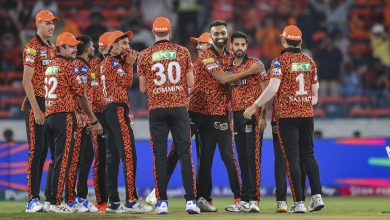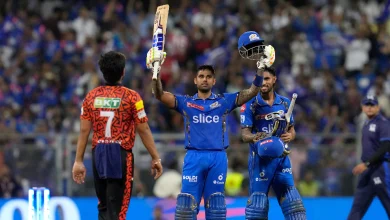ICC changes to the playing conditions

The Indian Express ls down the top three changes to Playing Conditions announced the International Cricket Council on Tuesday which will impact the way the game is played and viewed.
Unfair movement the fielding side:
Did you just stop praying for your team as the equation came down from 11 needed off two to 11 needed off one ball? Don’t. It is still very much possible. Even without the bowler throwing a wide or a no ball. The fielders might be at fault for this. As per the ICC, “any unfair and deliberate movement while the bowler is running in to bowl could now result in the umpire awarding five penalty runs to the batting side, in addition to a call of Dead ball.”
What constitutes an unfair and deliberate movement? In most cases, any movement any fielder, excluding the wicket-keeper, after the ball comes into play and before the ball reaches the striker.
Laws 27.4 & 28.6 – Unfair movement the fielding side
Until now, any member of the fielding side who moved unfairly, was punished only with a ‘Dead ball’ – potentially cancelling a perfectly good shot the batter.
It will now see the batting side awarded 5 Penalty runs. pic.twitter.com/UJA1GEZZWt
— Marylebone Cricket Club (@MCCOfficial) March 9, 2022
Introducing the Laws 27.4 and 28.6 back in March, describing the aforementioned change to Playing Conditions, the Marylebone Cricket Club had said, ”Until now, any member of the fielding side who moved unfairly, was punished only with a ‘Dead ball’ — potentially cancelling a perfectly good shot a batter.”
The batter would now hold the advantage in case the fielding side resorts to the above, given the five runs that will be added to the team’s total and the delivery still being deemed invalid. So, continue with those prayers until the very end.
Running out of the non-striker:
No need to associate the name of a bowler to this. You can simply call it a run-out now.
The new Playing Conditions l the act of a bowler attempting a run out at the non-striker’s end under the ‘Run Out’ section (Law 38). Previously, this was led under ‘Unfair Play’ (Law 41).
Ravichandran Ashwin attempting the run-out of Jos Buttler at the non-striker’s end during IPL 2019. (Screengrab: Hotstar)
Referred to as ‘Mankading’ after the former Indian bowler Vinoo Mankad, who had dismissed Bill Brown twice removing the bails when he was outside the crease at the non-striker’s end during the India tour of Australia, the act has been much maligned in the cricket realm.
Earlier, Law 41.16 in the MCC book of laws pertaining to the “Non-striker leaving his/her ground early,” stated: “If the non-striker is out of his/her ground at any time from the moment the ball comes into play until the instant when the bowler would normally have been expected to release the ball, the non-striker is liable to be run out.” This however, is the updated version of the code from 2017. The language was changed from the “Bowler attempting to run out non-striker before delivery” to “Non-striker leaving their ground early” in order to put the “onus on the non-striker to remain in their ground.”
You may have heard the term, ‘Spirit of Cricket’ during discussions about a bowler running out the batter if he/she saw them leave the crease before the delivery being bowled. That’s because it is mentioned in MCC’s Law 41. That the instance above would now be dealt with under the ‘Run Out’ category means the custodians of the game’s law have called it for what it is. A de-stigmatisation much called for.
Incoming batter ready to face the ball:
The game is getting quicker. Not just shorter, quicker. Not just a format, but every format.
As per the new tweak to the Playing Conditions, “An incoming batter will now be required to be ready to take strike within two minutes in Tests and ODIs, while the current threshold of 90 seconds in T20Is remains unchanged.”
Earlier, a batter was given three minutes to take strike in ODIs and Tests. Failure to do so would result in the fielding team appealing for timed out. The margin has gotten even shorter now.
Not only is this in attempt to cut the excess time off the two big formats of the game but it also means less commercial airtime for brands in between dismissals, directly affecting a major income source.






